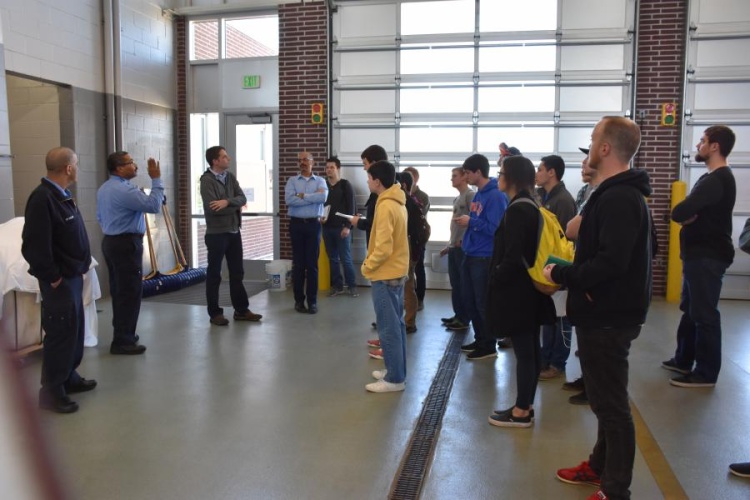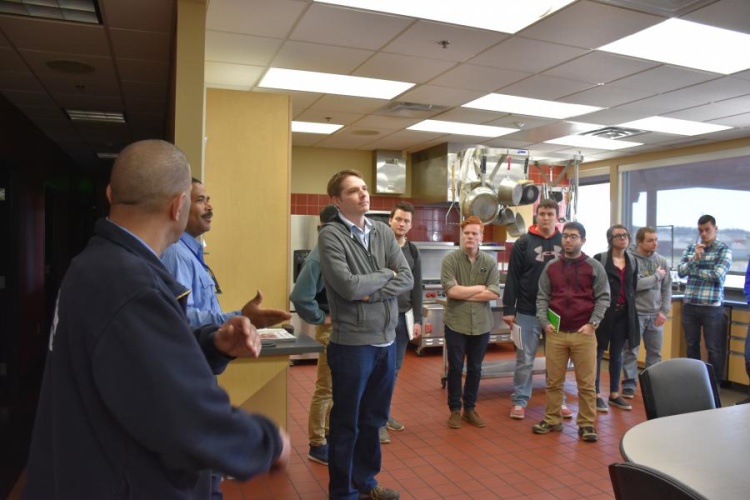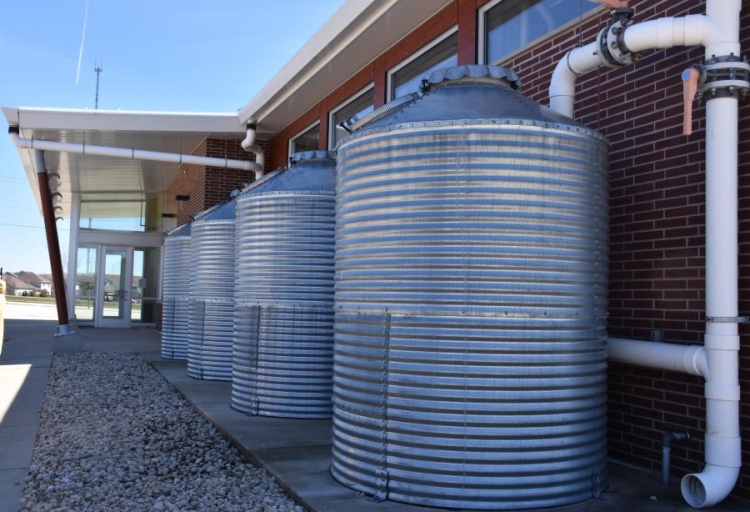
A Greener Firehouse: How Fire Station 12 LEEDs the Way
posted

The fire station, which opened in 2009, features “green” construction elements that promote sustainability and water and energy conservation.
As aspiring architects, engineers, and designers, these students had the opportunity to look at the systems and technologies that came together to create this state-of-the-art, energy-efficient firehouse. Likewise, firefighters had the chance to offer their perspective on how to ensure such facilities are designed with practical aspects in mind.
“I’ve worked at fire stations where it was clear firefighters didn't have input in the design,” said firefighter James McDuffie. “If I could give you (students) one piece of advice, it would be to talk to the people you’re building for. Get their input and make sure the design meets their needs.”
Below are photos from the students' tour around Fire Station 12:

At first glance, the apparatus bay looks like any other – a spacious area developed to accommodate the large rigs that will inhabit it. Helping set Station 12's apparatus bay apart is the abundance of windows lining the walls and doors. Daylight beams through, cutting down on the need for artificial lighting.
Underneath the floor runs a network of geothermal pumps radiating heat to the bay.
Just off to the side of the apparatus bay is Station 12’s hot water system, which uses solar power and booster pumps to keep the hot water flowing throughout the 13,000-square-foot facility.

Overlooking South Point Road, Station 12’s rooftop offers a number of environmentally-friendly amenities that promote sustainability, and even help native wildlife!
A perennial ground cover known as sedum lines Station 12’s rooftop. Though it goes dormant in winter, its summer blooms have become quite attractive to honeybees.
This “green roof” also helps redirect rain water into a gray water storage system. Approximately 80% of storm water that hits the roof is retained on site and used later.

South-facing solar panels produce 50% of the hot water used at Fire Station 12.

The fluorescent bulbs in use today are expected to be switched out for LEDs this year.


Although hard concrete is needed to support the fire 60,000-pound fire engine passing in and out of the station multiple times a day, the pervious pavement in the guest lot can accommodate passenger vehicles, and it allows water to soak through and return to the earth.
These are just some of the highlights that earned Station 12 its Leed Platinum certification. Read more about Fire Station 12’s construction, equipment, and staffing here!
Thanks to Associate Professor Samir El-Omari and his students from UW-Platteville for paying a visit. We look forward to seeing more energy-efficient facilities developed under their care and expertise in the future!
This content is free for use with credit to the City of Madison Fire Department.